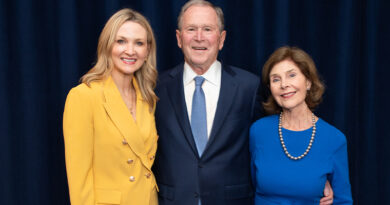Hockaday Students Explore Science

As Hockaday School begins its 101st year, a new era of teaching has begun with the opening of a new science center.
After 14 months of construction, the three-story center was opened in August as the first phase of the planned Centennial Center that will provide an interdisciplinary space for the arts and sciences.
The building, designed with full input from faculty over the past few years, will push the school’s students to explore fields of science, technology, engineering, and mathematics. With around 30 percent of Hockaday graduates declaring majors in a STEM field in the past few years, the space now allows students to delve deeper and prepare for their postgraduate careers.
“The entire science department was involved with the architects, before the plans even went out for a donor bid,” said Dr. Beverly Lawson, former chair of Hockaday’s science department.
The space fits the dreams of even professional scientists and houses many features that seem unusual for a middle and high school science center. The third floor is a highlight, as it houses the more flexible space in the building.
IDEA labs fill much of the floor and at first glance, Lawson said, they do not seem like much. The large empty rooms, with moveable dividers, are not designated for any one class or subject, but are instead created to allow classes to meet and invent in a space that will morph to students’ needs.
A personal favorite feature for Dr. Marshall Bartlett, current chair of the science department, is the 16-seat planetarium where he teaches astronomy.
“It’s great to be able to teach astronomy and show the students the sky not just trying to draw it on a white board for them,” Bartlett said.
The facilities also offer more space for the robotics team, whose power tools were previously held in a storage unit. The roof features a garden, deemed the “living lab,” that has already been used by the school’s strong environmental science club. A 3-D printer and laser cutter are already student favorites.
One of the most impactful features of the new building is the opportunity for individual research. Usually reserved for graduate students and some lucky undergrads, research is a strong focus for the new science center, which offers six independent student labs.
These labs will allow students to sustain ongoing projects in their own personal space, without having to move or dismantle their research to make room for class, Lawson said.
Interdisciplinary study has already begun in the center, which in later plans will become attached to the Fine Arts building.
The school’s History of Art and Music class, taught by longtime Hockaday teacher Ed Long, is housed in the science center’s digital media lab, a room designed to blur the boundaries of art and science.
“The vision has always been to have the spaces bleed into each other in some sort of organic way,” Bartlett said.
Mixing the space while maintaining a push for student involvement both in and out of the classroom has become a priority for Hockaday.
The curriculum for the high school only requires three years of science, including physics, chemistry and biology, allowing students to pick and choose what alternative, more advanced, science courses they would like to enroll in during senior year.
“I think a lot of girls are turned off because they think there’s a culture around [STEM] classes that is male, competitive, ego-driven and that they don’t fit into that,” Bartlett said. “We are very conscientious about letting every girl know, whether she thinks of herself as a science girl or not, that she can succeed in doing science.”









Great idea! I wish more Scots would choose STEM fields as well.